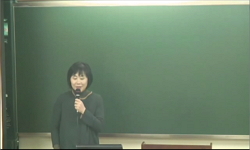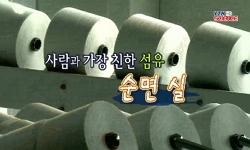Tea bowl has not received relatively much attention among Korea’s cultural heritage despite its artistic value and emotional aesthetics. Many historians and ceramists today are striving to shed new light on the hidden value and artistry of tea bowl ...
http://chineseinput.net/에서 pinyin(병음)방식으로 중국어를 변환할 수 있습니다.
변환된 중국어를 복사하여 사용하시면 됩니다.
- 中文 을 입력하시려면 zhongwen을 입력하시고 space를누르시면됩니다.
- 北京 을 입력하시려면 beijing을 입력하시고 space를 누르시면 됩니다.
찻사발의 미감을 통한 섬유예술의 중첩표현 연구 : -연구자의 작품을 중심으로- = A Study on Overlapping in Fiber Art Through the Aesthetic Sense of Ceramic Tea Bowl : Focusing on the Researcher’s Works
한글로보기부가정보
다국어 초록 (Multilingual Abstract)
cultural heritage despite its artistic value and emotional aesthetics. Many
historians and ceramists today are striving to shed new light on the hidden
value and artistry of tea bowl in order to define its identity.
This study aims to examine the aesthetic and formative value of tea bowl
and seek expansion of formative art by adopting the overlapping technique
using fibers and making new attempts at fiber art derived from the molding
of ceramics. First, it identified the formative beauty of tea bowl by
analyzing the names, origins, and forms of tea bowl, revealing that tea bowl
conveys the aesthetics of Eastern philosophy that pursues nature as simple
and unpretentious. Second, this study investigated the concept of
overlapping and the physical properties of fibers required for creating
works by overlapping flexible fibers and examined the quilt structure
comprised of layers of fiber. It was found that the quilts in Faith Ringgold’s
works can be a means of artistic formative expression beyond everyday
crafts, and Yayoi Kusama's overlapping technique using repeated patterns
found similarities to the researcher's expression of cutting fibers into small
pieces and repeatedly overlapped. The moon jars in Whanki Kim’s works,
conveying Korean sentiment, helped the researcher expand tea bowl from a
concrete form to an ideational meaning. This study confirmed the
expandability of the formativeness of ceramic tea bowl to formative fiber
art through various expressions of overlapping. Furthermore, this study has
academic significance in promoting the excellent cultural value and identity
of Korea’s tea bowl through art.
Tea bowl has not received relatively much attention among Korea’s
cultural heritage despite its artistic value and emotional aesthetics. Many
historians and ceramists today are striving to shed new light on the hidden
value and artistry of tea bowl in order to define its identity.
This study aims to examine the aesthetic and formative value of tea bowl
and seek expansion of formative art by adopting the overlapping technique
using fibers and making new attempts at fiber art derived from the molding
of ceramics. First, it identified the formative beauty of tea bowl by
analyzing the names, origins, and forms of tea bowl, revealing that tea bowl
conveys the aesthetics of Eastern philosophy that pursues nature as simple
and unpretentious. Second, this study investigated the concept of
overlapping and the physical properties of fibers required for creating
works by overlapping flexible fibers and examined the quilt structure
comprised of layers of fiber. It was found that the quilts in Faith Ringgold’s
works can be a means of artistic formative expression beyond everyday
crafts, and Yayoi Kusama's overlapping technique using repeated patterns
found similarities to the researcher's expression of cutting fibers into small
pieces and repeatedly overlapped. The moon jars in Whanki Kim’s works,
conveying Korean sentiment, helped the researcher expand tea bowl from a
concrete form to an ideational meaning. This study confirmed the
expandability of the formativeness of ceramic tea bowl to formative fiber
art through various expressions of overlapping. Furthermore, this study has
academic significance in promoting the excellent cultural value and identity
of Korea’s tea bowl through art.
국문 초록 (Abstract)
핵심어: 사발, 섬유, 중첩, 조형예술, 퀼트
사발은 우리나라의 문화유산 중에서 예술적 가치와 그 안에 담겨있는 정서적 미학에 비해 조명을 받지 못했다. 오늘날 역사학자들과 많은 도예인은 사발의 숨겨진 가치와 예술성을 재조명...
사발은 우리나라의 문화유산 중에서 예술적 가치와 그 안에 담겨있는 정서적 미학에 비해 조명을 받지 못했다. 오늘날 역사학자들과 많은 도예인은 사발의 숨겨진 가치와 예술성을 재조명하고 사발의 정체성을 찾기 위해 노력한다. 이 연구는 찻사발의 미적 조형성의 가치를 재조명하여 섬유를 소재로 중첩을 시도하고 도자의 조형에서 출발한 섬유예술로의 새로운 시도를 통해 조형예술 영역의 확장을 모색하는 데 있다. 먼저 사발의 명칭과 유래, 형태를 분석하여 사발의 조형적 아름다움을 확인하였으며 무위자연과 대교약졸의 자연을 추구하는 동양사상의 미학이 담겨있음을 보여주었다. 둘째, 유연한 소재의 섬유를 중첩시켜 작품을 제작하는데 필요한 중첩의 개념과 섬유의 물성을 파악하고, 섬유의 층으로 이루어진 퀼트 구조를 확인한다. 페이스 링골드의 작품에 나타난 퀼트가 단순한 생활 공예를 넘어서 예술적 조형표현의 수단이 될 수 있음을 확인할 수 있었고, 쿠사마 야요이의 반복된 패턴에 의한 중첩 작 업은 섬유를 작게 잘라 계속 중첩 시키는 표현기법과 유사성을 찾을 수 있었다. 한국적 정서인 김환기 작품 속의 달항아리는 연구자에게 사발을 구체적인 형상에서 관념적인 의미로 확장할 수 있게 하였다. 연구자는 도자 사발의 조형성을 다양한 중첩표현을 통해 섬유조형예술로의 확장성을 확인하였다. 더 나아가 예술을 통해 우리 찻사발의 우수한 문화적 가치와 정체성을 알리고자 하는 점에서 학술적 의의를 찾을 수 있다.
핵심어: 사발, 섬유, 중첩, 조형예술, 퀼트
목차 (Table of Contents)
- Ⅰ. 서 론 1
- 1. 연구의 필요성 및 목적 1
- 2. 연구의 범위와 방법 2
- Ⅱ. 이론적 배경 4
- 1. 사발의 조형성 4
- Ⅰ. 서 론 1
- 1. 연구의 필요성 및 목적 1
- 2. 연구의 범위와 방법 2
- Ⅱ. 이론적 배경 4
- 1. 사발의 조형성 4
- 가. 사발의 명칭 및 유래 4
- 나. 사발의 구조와 형태 5
- 다. 사발의 미적 조형성 9
- 2. 중첩에 의한 섬유예술 11
- 가. 중첩의 개념 11
- 나. 섬유예술과 중첩 16
- Ⅲ. 선행작가 연구 21
- 1. 페이스 링골드(Faith Ringgold) 21
- 2. 쿠사마 야요이(Kusama Yayoi) 23
- 3. 김환기 26
- Ⅳ. 연구자 작품 분석 30
- 1. 작품 형성 배경 및 제작 방법 30
- 2. 작품 분석 33
- Ⅴ. 결론 41
- 참고문헌 44
- 도판목차 47
- 작품목차 49
- 도표목차 49
- Abstract 50












